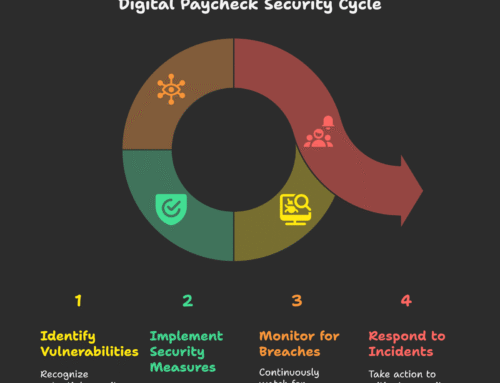Improving employee productivity is the biggest challenge companies are facing across the world. The adaptation of rigorous advancement in technology and the demand of employees to work from home has not given enough time to either employees or companies to settle in this new framework.
The work environment can play a vital role in either improving or reducing an employees’ productivity. So, is it work-from-home that is causing all the drop in employee productivity?
Well, that is an overwhelming reason affecting productivity that we will discuss here. However, that could not be the crux of the problem. So, what other factors should be taken into consideration when the task is to improve employee productivity? We will discuss them further in this article.
The pandemic started on a positive note with high productivity in employees. Everyone enjoyed the new & flexible environment they got to work in. The comfort and flexibility are appreciated by everyone. Organizations supported saving on planning and employees saved in commutation and tariff.
Following are some statistics to prove that:
- 77% of employees report greater productivity while working off-site, according to the Remote Collaborative Worker Survey by CoSo Cloud.
- 64% of global business leaders said flexible working had a positive impact on productivity, Condeco reports.
Employee productivity plays a vital role in a company’s growth. Kathryn Minshew quotes:
You know, as most entrepreneurs do, that a company is only as good as its people. The hard part is building a team that will embody your company’s culture and propel you forward.
However, it has been dwindling for some time and we are here with effective tips to help you boost your employee’s productivity.
What is Employee Productivity?
Employee productivity aka productivity in the workplace could be referred to as the measure of an individual employee’s productive output.
In other words, the amount of work carried out by an employee in a particular place and time is referred to as workplace productivity. Workplace productivity is directly proportional to the employee’s productivity as the work we are talking about here is carried out by the employees.
How to Measure Productivity in the Workplace?
First, define a standard or goal to which you will compare your efforts and status to measure your productivity. There are several approaches to measure productivity depending on the type of work or the type of business etc.
However, according to CIPD, the primary statistics that are usually considered are:
- The output per hour worked and
- The output per worker.
As mentioned above, it may vary from business to business and distinct types of work. So, setting a standard that you as a team decide to measure productivity will help you learn and boost productivity.

Business photo created by DCStudio – www.freepik.com
Below are the 11 Tips to Improve Employee Productivity in 2022!
To improve productivity, it is crucial to diagnose what is affecting your workplace productivity. Try to learn what is preventing your employees from performing to their full potential. There must be cooperation from the management in understanding their probable issues and initiation from the employees in reporting the issues.
Here are some tips that we believe will help your team to keep the work in check and boost their productivity:
1. Manage Internal Knowledge
Remote working employees struggle with access to information. Siloed information does not help with quick decisions making, thereby productivity is affected. It is said that 20% of the employees spend their valuable time finding the information.
To reduce the dependency and for quick access, an internal wiki is the best solution. Having an internal wiki helps the organization to store the information centrally and you can restrict access based on workflow and responsibilities.
2.Workplace Environment:
The workplace environment must be well maintained. Starting from a good amount of light to having plants and bright colors, help in setting the employee’s mood. Our surroundings are responsible for our behaviors.
James Clear writes,” Motivation is Overvalued. Environment Often Matters More.”
Once the field is set, get your soldiers to work by setting standards and bringing in some rules to maintain the culture.
3. Promote Automation:
Slow-paced operational management and obsolete technology can bring down motivation and reduce productivity in your employees.
Automate regular tasks for yourself and your employees both. Leverage technology by providing the right tools required for faster implementation. This will enhance their productivity and boost their motivation to achieve results earlier than the deadline.
Cloud computing has made it quite easy for companies to afford high-end technology.
4. Optimize Team Meetings
If not regularized team meetings can be redundant and a waste of time. If it consumes an hour of the manager, collectively for a team of 10 to attend an hour’s meeting could waste 11 hours in total.
Unproductive meetings allow each employee to spend 31 hours (almost 4 working days) every month.
Optimizing email communication instead of team meetings would be the best way to tackle this problem.
5. Flexible Hours to Work
As mentioned above, allowing employees to work remotely has shown tremendous results in achieving productivity. However, it can be different in accordance with your type of organization. So, take a call accordingly.
Remote work should be promoted if your employees are present during team meetings and actively available whenever reached out. For this, you may also set a response time for them.
6. Employee Training & Growth
This tip could be one of the most lucrative when it comes to increasing employee productivity. Employees who join the firm considering mutual growth could get motivated to outperform themselves with each skill they learn and the task they perform.
According to research performed by the NCES (National Center for Education Statistics), there is a direct correlation between employers providing resources to upskill and boosting employee productivity.
Introducing training within the organization or bearing expenses for their learning from other platforms could reflect the company culture.
7. Streamline Communication
It is that replacing team meetings with emails could help save time and improve productivity. However, if communication is not streamlined well it could prove to be counterproductive.
It is never a one-man show, it is necessary to involve the team and often engage with each other to build a flow of communication. Casual get-togethers play a vital role in boosting engagement between employees. We humans are social beings.
Apart from the camaraderie between employees, an organization must also provide effective channels to communicate. An investment to speed communication is advised especially for work-from-home environments.
8. The Clarity in Goals & Vision
To reach somewhere, you must be clear about where you want to go and how you wish to go. Let us assume that the standard you have set for productivity is where you want to reach in terms of productivity. Figure out how you would reach there.
Creating an action plan mentioning short-term goals and long-term goals could speed up the business growth and improve employee productivity. An action plan could be made on a quarterly or yearly basis.
9. Incentives Motivate Employees
This way of motivation may sound shady in building a company culture. However, if offered as a recognition of employees’ efforts it will create healthy competition amongst employees. It is like giving them a reason to join you in achieving productivity.
Recognition should not have to always be materialistic. It varies from person to person. It is necessary to understand the employee’s interest before doing something overboard. It can be a hand-written note or a small token that approves of the employees’ efforts. Decide wisely!
10. Ingrain Growth Culture
The best way to inspire them to follow your organization’s productivity goals is to lead by example. The leaders of an organization should become first what they want their employees to follow. And do first what they want their employees to do.
11. A 2-Way Constructive Feedback
2-way feedback is between the management and the employees. If the management
And employees both succeed in aligning their responsibilities and goals. It becomes easy to take an organization to the next level.
Having such a bi-weekly meeting could help in reflecting on the work accomplished. And solutions could be discussed for the goals that could not be accomplished. Build a strong relationship between employees and the managers.
It promotes continuous improvement in the process. Hence, leads to continuous growth.
Conclusion
If you are a leader or a manager of a team, employee productivity must be a matter of concern to you. The amount of investment you do in your employees must not exceed the business earnings brought in by the employees’ efforts.
First, you understand the importance of employee productivity in accomplishing your company goals. Then you recognize, diagnose, and take steps to improve employee productivity.
Give your employees the recognition they deserve. Help them with planning to improve their productivity. Provide the resources to upskill.
Once your employees start feeling productive and gain a sense of purpose, there is no looking back.






Leave A Comment